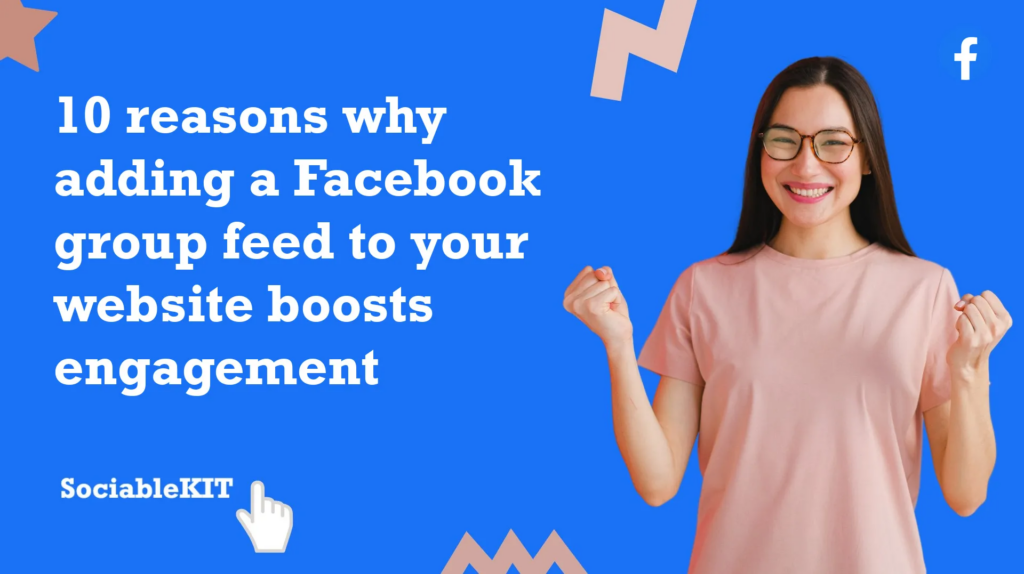
This article talks about how adding a Facebook group feed to your website can make more people interact with it. We’ll explore 10 reasons why this simple step can boost your website’s engagement.
Understanding these tips can help you connect better with your audience and make your website more lively. Keep reading to find out how you can easily make your site a go-to spot for engaging content.
Many folks miss out because they don’t blend their website with social spaces where conversations happen. They work hard on their website but wonder why the buzz isn’t building. By bringing a piece of the social world into your site, you can change that and create a lively hub for your audience.
“Turn your website visitors into an active community by inviting the conversation right onto your pages.”
Boosts Community Engagement
Adding a Facebook group feed to your website makes it easier for people to join discussions. It transforms your site from a one-way communication channel into a vibrant community space.
Emily had a blog about sustainable living but noticed her readers rarely interacted with her content. She decided to integrate her Facebook group feed into her website, where discussions about eco-friendly habits were already lively. Almost overnight, visitors began commenting more, not just on the group posts but on her blog articles too. Emily found that her website became a go-to place for people passionate about sustainability, and eager to share their experiences and tips. This change not only increased her site’s engagement but also built a supportive community around her blog.
Turning your site into a community hub encourages active participation and deeper connections.
Real-Time Updates Keep Content Fresh
Live updates from your Facebook group feed to ensure your website always has something new. This dynamic content keeps visitors coming back for more.
Tom runs a local sports fan club and noticed his website’s traffic was dwindling due to outdated content. By integrating his Facebook group’s live feed, his site started displaying the latest game discussions, fan theories, and match predictions. Fans began to flock to his website not just on game days but throughout the week, eager to catch up on the latest chatter. Tom’s site became the go-to spot for real-time updates and fan interactions, significantly increasing repeat visits. The constant flow of fresh content made his website indispensable to the local fan community.
Fresh, dynamic content transforms your website into a lively destination for repeat visits.
Easy Content Sharing
Sharing content directly from your website to Facebook encourages more interaction. It bridges the gap between your site and social media, making sharing seamless.
Sara, who sells handmade jewelry, integrated a Facebook group feed into her site, allowing customers to easily share their purchases and feedback on Facebook. This not only increased her products’ visibility but also led to a surge in website traffic as friends of her customers checked out her site. The ease of sharing turned her customers into brand ambassadors without any extra effort on their part.
Simplifying the sharing process turns your audience into active promoters of your content.
Enhanced User Experience
A Facebook group feed on your site means users spend more time engaging with your content. It creates a smooth and enjoyable experience that keeps them on your site longer.
Mark noticed his online bookstore had lots of visitors but very little engagement. After embedding his book club’s Facebook group feed, visitors started staying longer to join discussions about their favorite books. This not only increased the time spent on his site but also boosted sales as people were more inclined to buy books they talked about.
A seamless and engaging website experience encourages visitors to stay longer and engage more.
Instant Feedback Loop
Your website can become a place where feedback is instantly given and received. This fast exchange helps you understand and serve your audience better.
Lily, who creates online cooking courses, added her Facebook group feed to her site and noticed an immediate difference. Students began leaving comments on the feed about what they loved and what they struggled with. Lily quickly adjusted her courses based on this feedback, leading to happier students and more sign-ups.
Quick feedback helps you adapt and improve, making your offerings more valuable to your audience.
Simplify With a Widget
Using a widget to add your Facebook group feed to your website saves time and effort. It’s an efficient way to keep your site lively and engaging.
Alex, who runs a small community theater, struggled to keep his website updated with the latest news and events. After discovering a widget that could automatically pull updates from his Facebook group, he set it up on his site. This move kept his community informed and engaged without the need for constant manual updates.
The SociableKIT widget makes it easy to maintain an engaging and up-to-date website.
Thanks for reading!
Thanks for sticking with us through this article! We hope you found our tips on boosting your website engagement by integrating a Facebook group feed useful. Don’t forget to follow us and subscribe to our newsletter for more handy advice like this, and let’s keep making your website a buzzing community together!
365 Days of Social Media Content Ideas: Your Complete Guide to Engaging Posts
This comprehensive resource is filled with engaging and interactive post ideas to keep your social media feeds vibrant all year round.
No more stress about what to post next or how to engage your followers – we've got you covered!
Start your journey towards an enhanced online presence today! Please enter your name and email below, and this invaluable tool will be on its way to your inbox.